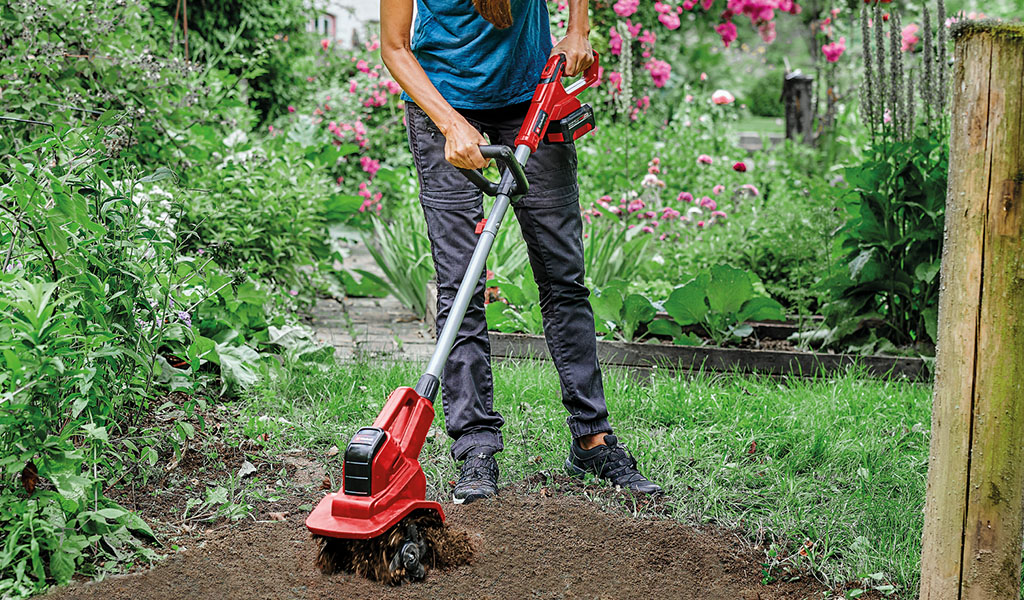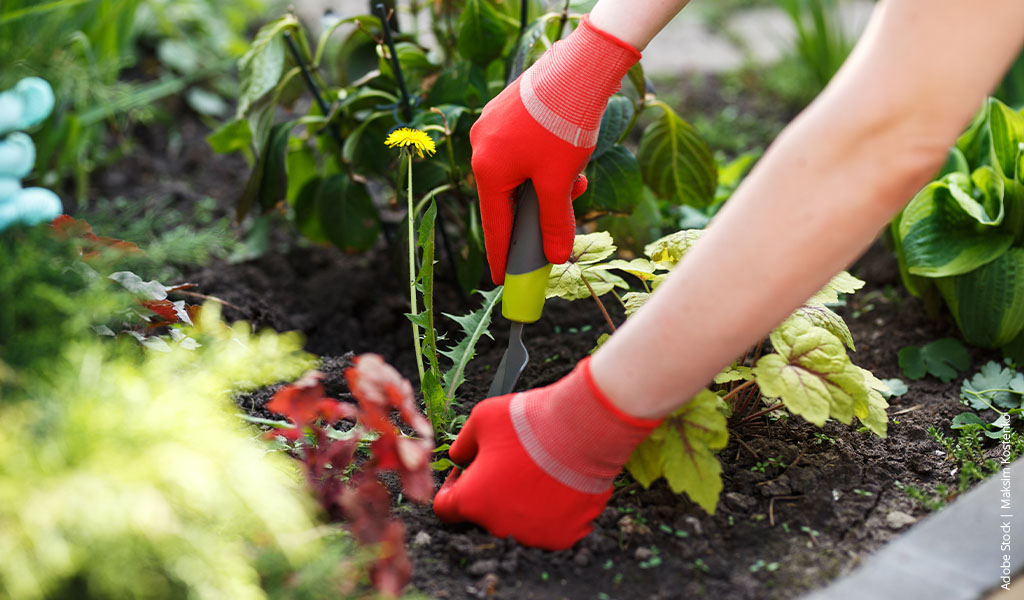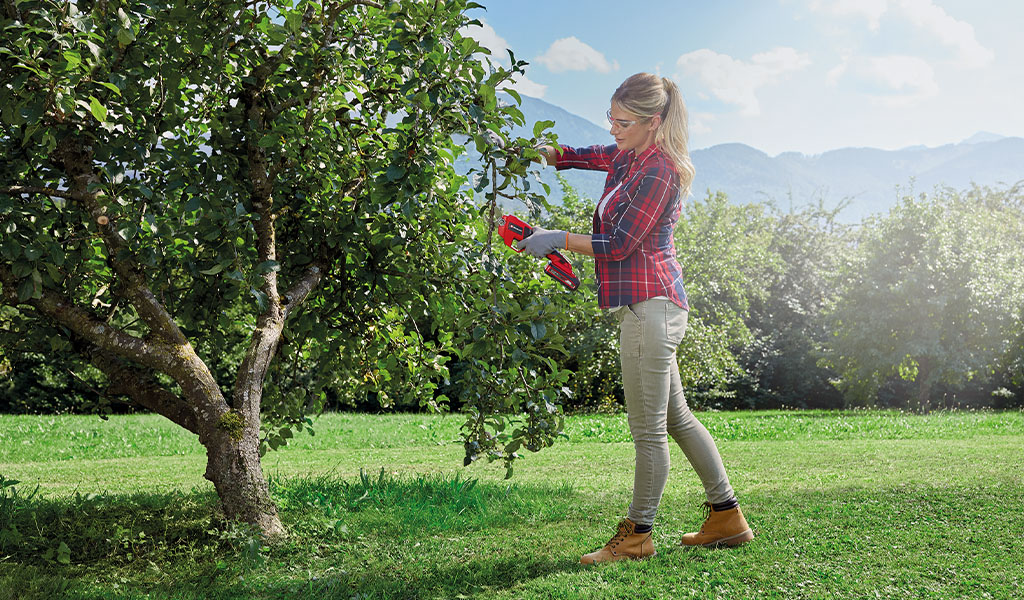Creating and maintaining beds
Spring is just around the corner. March and April are the perfect months to breathe new life into your garden. This is best achieved by creating new beds or refreshing existing ones. Whether you plant vegetables, flowers or perennials here is entirely up to you. All you really need to remember are a few points for your efforts to literally bear fruit at the end of the garden season.
We will show you how to properly prepare the beds, what exactly you need to do and how to properly care for your vegetable garden during the growing season. Our blog post will show you which tools can be of help and take a lot of work away from you.

Create or refresh beds
A look at your garden will tell you whether you just want to refresh your old beds or create completely new ones. Both are certainly a good choice to bring a breath of fresh air into your garden. If you want to add to your existing beds, this solution is perfect for simply growing your own vegetable garden or flower and perennial meadow.
Creating a new bed
Before you put in a new bed, you should think about a few things in the first step:
- Location: The ideal place for your new vegetable garden or flowerbed is definitely a place with plenty of sunshine. However, make sure that your plants also get some shade in midsummer, as too much sunlight could burn the leaves.
- Drainage: The water should drain well and not accumulate in the soil under your plants. This prevents the plants from "drowning".
- Wind: Also make sure that your bed is protected from the wind. Young plants can be easily damaged if there is too much wind.
- Size: If you want to grow tall perennials or vegetables that need a lot of space, you have to allow a little more space. For a few tomatoes and some lettuce, a small area is enough. Find out in advance how much space the plants you would like to plant need. The size of your bed will depend on this.
The location and size of the new vegetable bed are now planned and you can start digging around your lawn. In fact, the best time to do this would be in autumn before sowing, as the soil will be sufficiently loosened and aerated by the frost over the winter. In addition, the microorganisms in the soil can recover. Of course, the bed can also be created in spring, i.e. in March and April. However, the soil may be a bit harder here.

A commercially available spade is suitable for digging and loosening up the turf, which can be removed without complication. Then you can dig up and loosen the soil with the Einhell cordless tiller GE-CR 30 Li or the Einhell cordless tiller GE-CR 18/20 Li E. This is important for optimal air and water transport.
After the soil has been dug up and loosened, you can build a border around your flower or vegetable bed. This prevents the penetration of grass and weeds from outside of the bed and visually separates the bed from the rest of the garden. Whether you choose a border made of stone, wood or metal is entirely your aesthetic and design decision, nothing more.
- Tip: To ensure that you can easily walk through your bed, it is always advisable to plan a narrow path between the units. This makes it easier to water, fertilise and harvest.

Preparing the ground for existing beds
If you already have a vegetable patch in your garden, you can refresh it in the spring and prepare it for your flowers, perennials or vegetables. So that the soil is well prepared for new seeds or plants, it is recommended to "clean up" the bed:
- Weeding: Wild plants, such as the dandelion, should be completely removed from your new flower bed. Even though these plants often provide an additional habitat for insects, they take away valuable nutrients from the main plants in the bed and also space in the soil. Just leave a little space for dandelions and daisies to grow elsewhere.
- Remove larger stones: Stones are also an obstacle in your soil. The growth of the roots could be hindered by this and the plants will not reach their intended size, for example, to bear fruit and flowers.
- Loosening the ground: So that your young plants grow undisturbed and can absorb as much water and nutrients from the soil as possible, you should loosen up the ground before planting. Here, you can use the Einhell cordless tiller GE-CR 18/20 Li E for smaller and medium-sized beds and the Einhell cordless tiller GE-CR 30 Li for larger areas. Both devices actively support you in gardening and preparing the soil optimally for your plants.

Growing vegetables, flowers or perennials
If the soil in your vegetable patch is now prepared, you can start sowing or planting young plants. The best time for this is March or April. It is important that the soil is no longer frozen and that temperatures are continuously rising. Many vegetables, such as tomatoes or chili, can be grown in a small pot or mini greenhouse in your living room from as early as February. These seedlings can then be planted in the vegetable patch in spring. Before planting your bed, it is best to find out about the best way to grow or sow the desired type of vegetable or flower. With many varieties you need to wait until the middle/end of May before you start planting.
Proper maintenance
To be able to harvest the fruits of your plants at the end of the season, you should take care of your beds carefully on a regular basis. You should also take care of perennial beds and flowers so that their flowers can bloom beautifully:

Water regularly
You should adjust watering depending on the location you have selected for your bed. If the sun shines often and directly on your vegetable or perennial bed in midsummer, you should always water in the morning and in the evening directly to the roots below the ground. If possible, never water the leaves of the plant, otherwise they will dry out.
Basically, you should water less often, but with a lot of water.
Regularly remove weeds
Just like when preparing your new bed, you should also regularly weed when your plants are growing. They deprive the soil of vital nutrients and cause a lack of space in the soil


Fertilising
From time to time, make sure to fertilise your plants with a suitable fertiliser. As a result, important nutrients get into the soil and your vegetables can grow better. The Einhell universal spreader GE-US 18 Li is ideal for evenly distributing your solid fertiliser. For spraying liquid fertilizer, you can use our Einhell cordless pressure sprayer GE-WS 18/35 Li for smaller beds. For larger areas, the Einhell cordless pressure sprayer GE-WS 18/75 Li, which has a larger tank for fertilisers, is ideal. The garden sprayer is also suitable for distributing pesticides.
Incidentally, make sure that your fertiliser does not contain heavy metals. These could accumulate in the soil and thus harm the environment.
Mulching
Mulching can help store moisture in the soil, suppress weeds, and add nutrients. So, it's best to line the bottom of your bed with a layer of mulch made from organic materials such as straw, foliage, or compost to protect your plants and encourage their growth. With our Einhell electric knife shredders you can easily make your own mulch from your garden waste.
In another blog post we explain how you can use foliage and greenery in your garden. This also means that you can make your own mulch with our Einhell garden shredders.


Supporting plants
Some vegetables such as tomatoes or peas should be supported during their growth phase, as they could buckle and tip over under the load of their fruits. Rods, nets or cages can be used for this.
Pruning perennials
With the Einhell cordless pruning saw GE-GS 18/150 Li or the Einhell cordless pruning shears GE-LS 18 Li, you can easily prune your perennials and bushes so that they can form new shoots and enjoy healthy growth.


Regular harvesting
When your plants bear first fruits, harvest them as soon as they are ripe. This allows new fruits to grow and you can generally harvest more vegetables over the season.
Items in this article
You can find the following Einhell garden tools in this article. They can optimally support you in gardening and especially in laying your beds.




